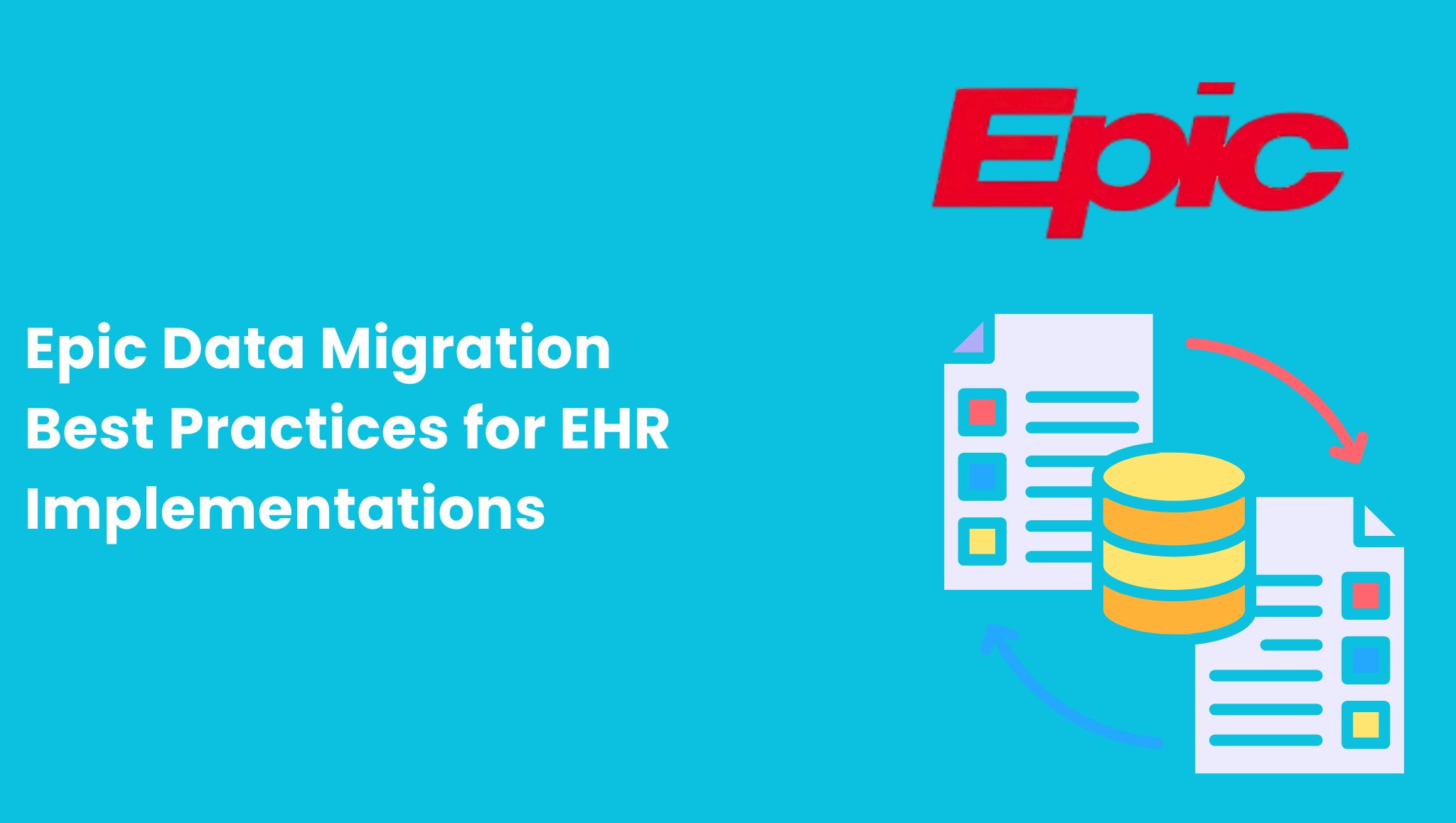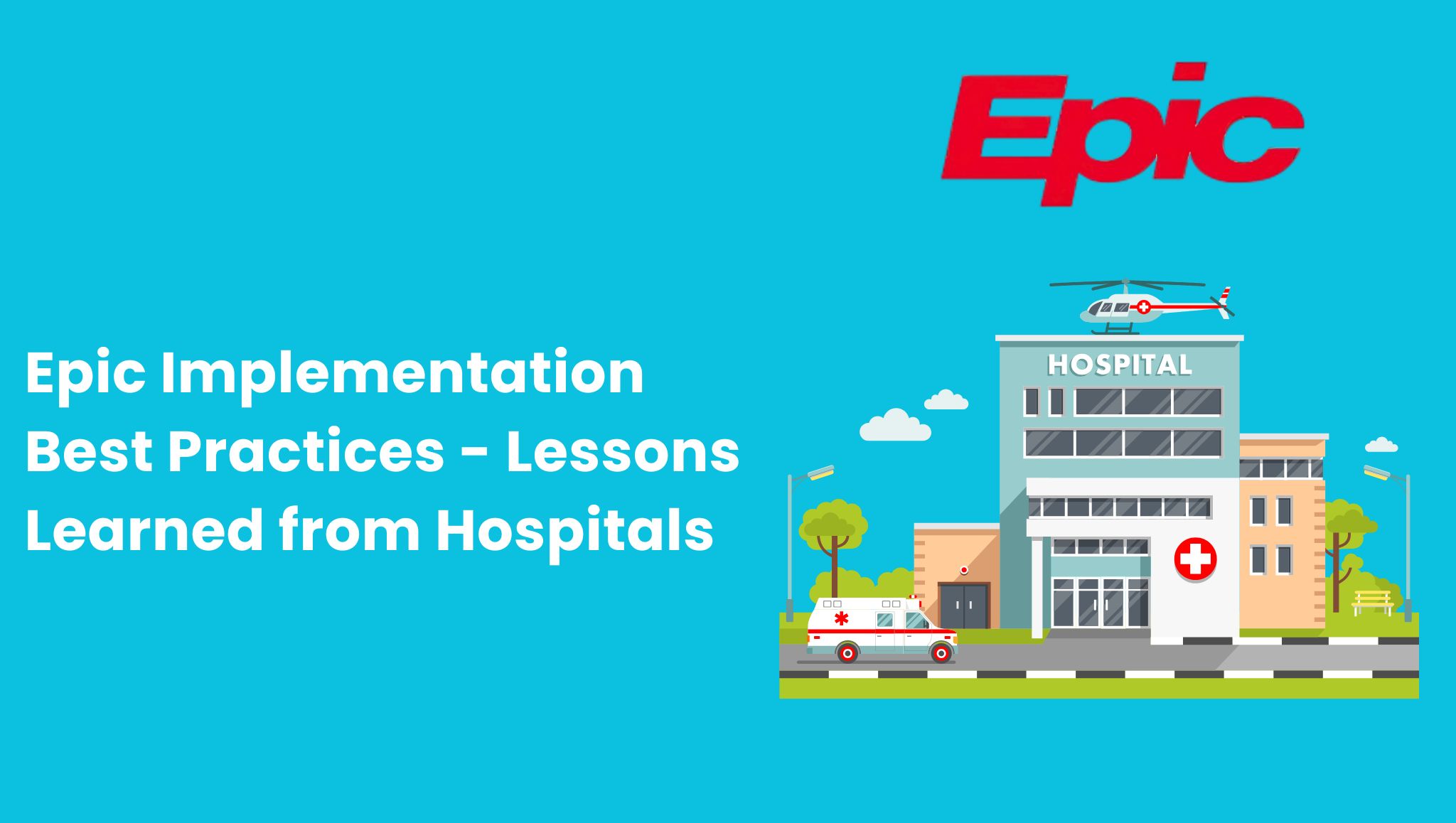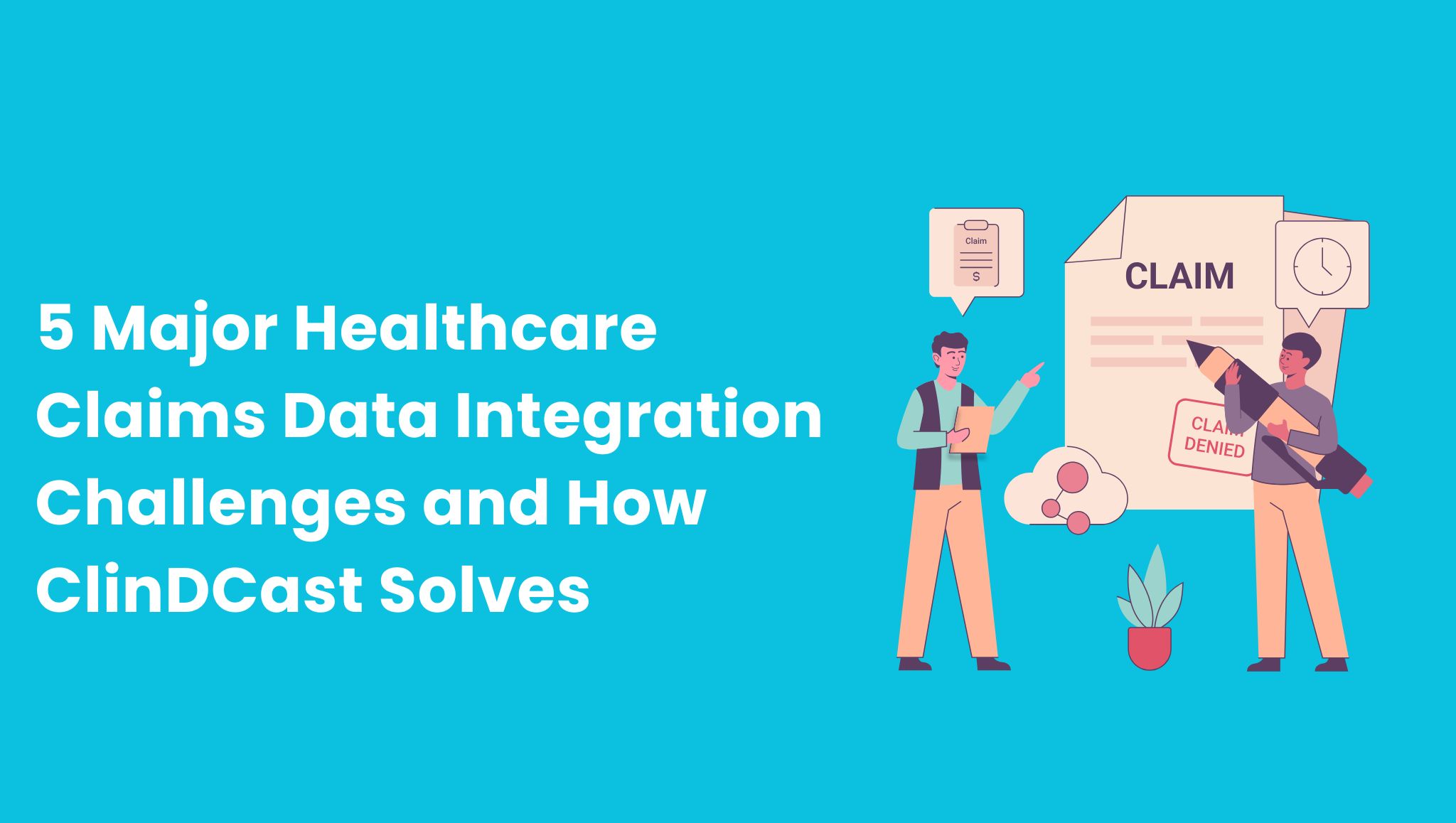
For any healthcare organization, implementing Epic EHR is an important milestone. However, precise, safe, and smooth data migration is crucial to the implementation’s success. Clinical, operational, and financial data must be transferred from legacy systems into Epic. Data loss, compliance risks, workflow disruption, and go-live delays could arise from improper handling. The Epic Data Migration Best Practices for EHR Implementations listed below will guarantee a seamless migration and an effective Epic deployment.
1. Start with a Clear Data Migration Strategy
a) Determine which data types—such as clinical, billing, demographic, scheduling, and historical records—will be transferred.
b) Ascertain the current location of the data (e.g., existing EHRs, LIS, pharmacy systems, spreadsheets, or third-party software).
c) Describe the phases of migration, such as test migration, go-live migration, and baseline data extraction.
d) Set data validation standards and assign responsibilities to IT and clinical leads.
Early planning with Epic-certified experts reduces system downtime and helps prevent rework.
2. Classify Data and Migrate Only What Is Necessary
a) Differentiate between active and inactive patient data.
b) Historical data should be archived in accordance with legal and medical requirements.
c) Prioritize the migration of recent and clinically relevant data.
d) To maximize system performance, avoid moving unnecessary or out-of-date files.
A thorough migration of data from the previous five to seven years is advised by industry best practices, with older data being safely archived.
3. Cleanse Data Before Migration
a) Remove duplicate records.
b) Standardize formats for medication information, dates, and medical codes.
c) Fix any inaccurate or missing insurance or demographic data.
d) Validate coding against ICD, CPT, SNOMED, and RxNorm requirements.
Clean data processing promotes physician adoption and speeds up Epic performance.
4. Use FHIR and HL7 Standards for Interoperability
a) Map structured data to formats compatible with Epic.
b) Utilize Epic tools such as Bridges, Chronicles, and Clarity.
c) Use secure integration protocols to guarantee accurate data transformation.
d) To avoid information gaps, verify the entire data exchange.
Long-term interoperability is ensured and data migration is greatly streamlined by using FHIR.
5. Conduct Multiple Test Runs and Parallel Validation
a) Perform multiple test migrations in non-production environments.
b) Validate clinical and operational data with both IT and clinical stakeholders.
c) Compare migrated data with original records to confirm accuracy.
d) Examine important information like the patient’s medical history, allergies, orders, prescription drugs, invoices, and insurance information.
Engaging clinicians during validation promotes better visibility and compliance readiness.
6. Prioritize Data Security and HIPAA Compliance
a) Apply end-to-end data encryption.
b) Implement role-based access control.
c) Use secure data transfer protocols.
d) Maintain audit logs for all data movements.
To ensure HIPAA and HITECH compliance, only authorized personnel should have access to patient health information during migration.
7. Leverage Epic-Specific Tools and Expertise
a) Use Epic’s Chronicles for real-time data storage.
b) Utilize Caboodle Data Warehouse for reporting and analytics.
c) Implement Epic Data Conversion Toolkits to support migration.
d) Hire qualified Epic implementation specialists to oversee cutover execution, mapping, and validation.
Specialized support speeds up migration schedules, lowers the chance of mistakes, and increases go-live success.
8. Monitor Post-Go-Live with Real-Time Validation
a) Verify data accuracy in the live Epic environment.
b) Monitor and rectify transactional inconsistencies.
c) Track reporting delays or data feed issues.
d) Provide post-go-live clinical and technical support.
After migration, a 30- to 60-day hypercare period is advised to stabilize operations.
Why Partner with ClinDCast for Epic Migration
ClinDCast provides:
a) Certified Epic implementation and data migration experts
b) Proven migration frameworks
c) Automated validation and integration tools
d) Secure and compliant data handling
e) Post-go-live support and optimization
For the purpose of to minimize disruption, increase adoption, and maximize return on investment, we assist healthcare organizations with the safe and effective migration of data into Epic.
Conclusion
One of the most important and dangerous aspects of implementing an Epic EHR is data migration. You can reduce risks, improve system performance, and support clinical efficiency by implementing the best practices mentioned above, particularly data cleansing, validation testing, and the use of Epic-certified tools.























